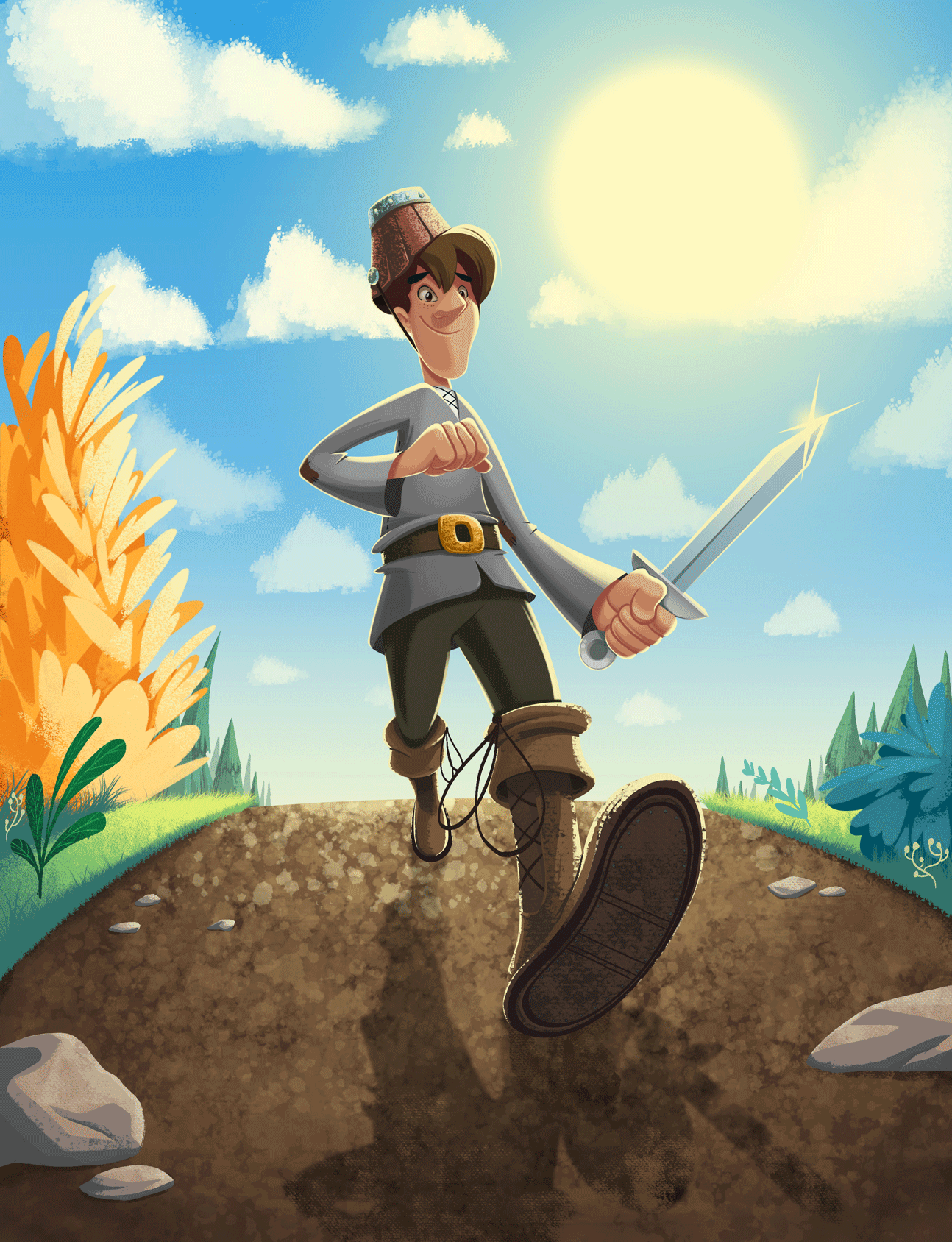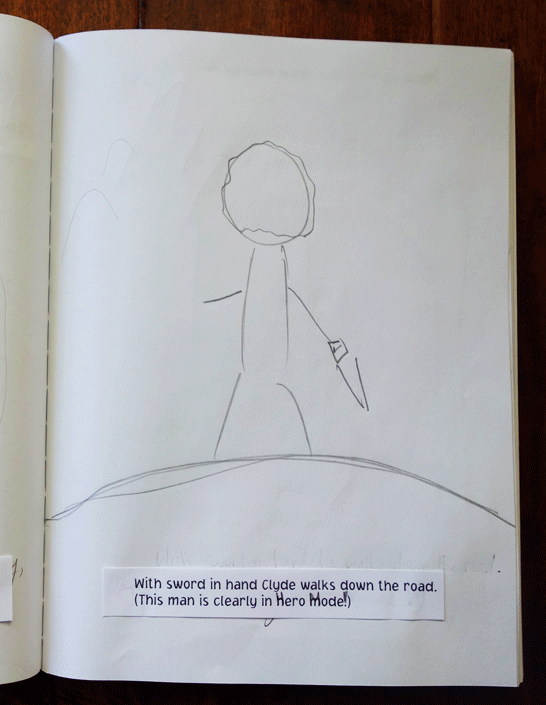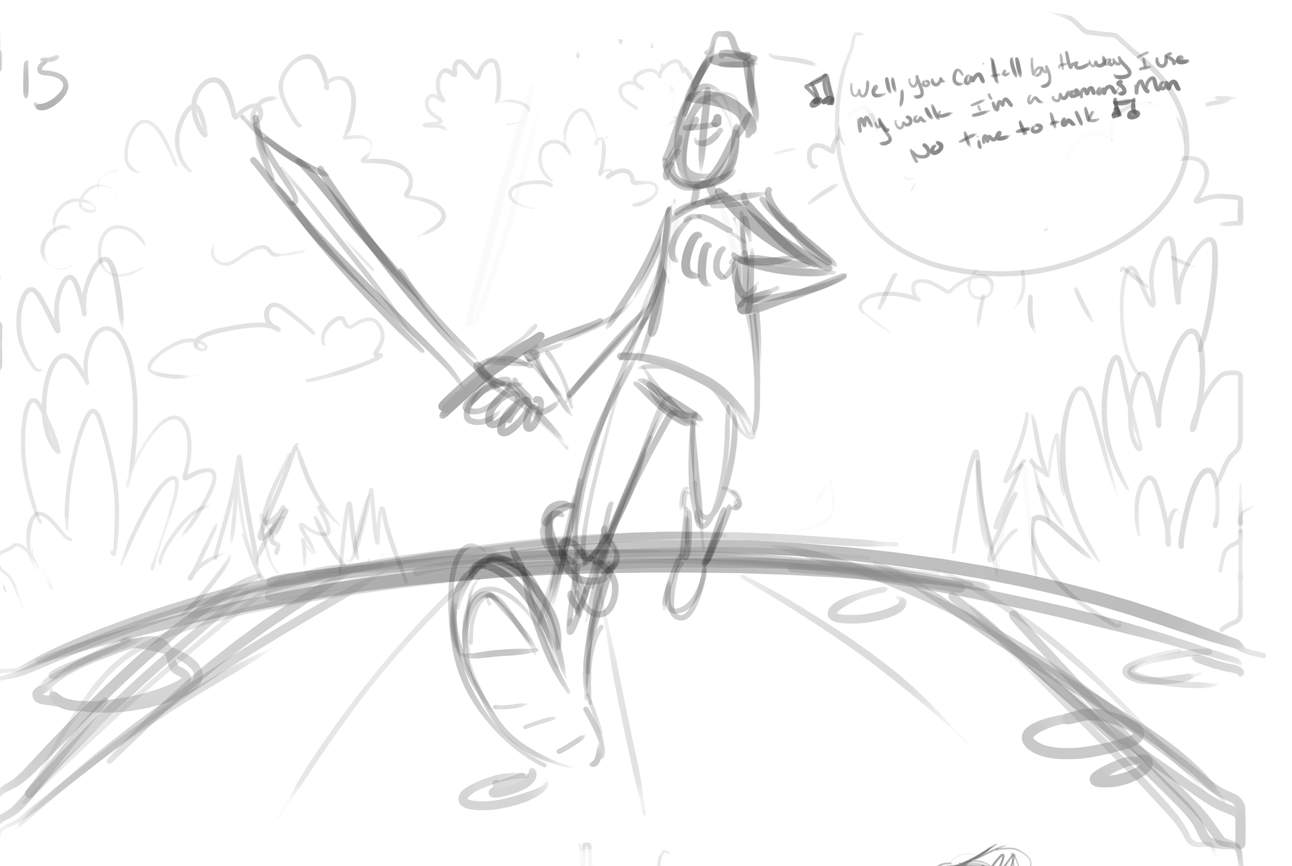At this point in time, you have learned a little bit about the bumbling-yet-eager protagonist of "Put Out the Fires."
If you have had a similar experience to Mike and myself, then you have become endeared to Sir Clyde, Master of the Fires.

Clyde is as human as human can be. No radioactive super-transformation that offers special abilities, no meticulous training from a warrior-guru.
When Clyde leaves his little cottage in the countryside, he wants to prove his value to the world and become a hero. He doesn't know what feats he will need to perform or what enemies he will need to defeat in order to achieve such status, but he sets off with undaunted determination.
Like a Phoenix, the Hero Rises from the Ashes
Within a few short hours, the opportunity presents itself. He dashes in with zeal and pizzazz (yes, I just used five z's in three words!) to help a (not-so) brave band of townspeople extinguish the fires that are ravaging their rooftops.

Members of the Not-So-Brave Band of Townspeople
How would you feel, mere hours after having begun your quest, for having achieved such a mini-victory?
Well, I will tell you how Clyde felt. Or, rather, I will show you:

Clyde with bolstered confidence, steeled nerves, and (dare I say) even a smooth swagger after achieving his first mini-victory. <Click image to zoom.>
The reason I love this scene in the story is because you can almost feel what Clyde must be feeling in the illustration.
But moments like this in books, movies, and art don't just happen; they are crafted.
Mike and I approached each scene creation with an attentive eye to capturing the gestures, angles, and lighting that would express the emotions we hope the readers will experience through the story.
Let me share with you some of the behind-the-scenes efforts that went into this page of the book.
First Effort: Mark's Ridiculous Storyboard
After finishing the text for "Put Out the Fires," I created a storyboard to layout the text into the 32-page format and develop a general feel for flow and what the scenes might look like.
Here's the part of my storyboard that Mike used to draw this page of the book:

This is why I am not the illustrator of the book. <Click image to zoom.>
Second Effort: Mike's Thumbnail Sketch
Before tackling a final version, Mike sketched a thumbnail for what this page might look like. (This is necessary because of the lack of details and overall helpfulness that my first sketch presented.)

When I saw this, I thought, "I don't know how he knew what I wanted, but this is it!" <Click image to zoom.>
Wrapping It All Together
After my ridiculous storyboard sketch and Mike's impressive thumbnail sketch, he was able to complete the illustration. Because of all the effort that we (especially Mike) put in before approaching the final illustration, there were little to no revisions needed once he finished coloring it.
You may think "and the rest is history" with Clyde, that he slides gracefully onto the hero's podium and the remainder of the story is all glee and glory.
Not true, however. Like most heroes, Clyde stumbles into his hero-hood.

Sometimes we see the people around us doing amazing things, heroic things, and they make it look so effortless. We have to keep in mind all the "versions" that preceded their performance. All the mistakes, edits, re-dos, and stumbles that took place before we ever saw the glorious feat.
Kind of like making a kids' book.




Wow, I love the graphics! Thanks for keeping us involved with the book writing/illustrating process. I can’t wait to hear more about Clyde’s adventures :).
Also, I love the point that we often only see someone’s finished product and forget that they too had mistakes, edits, etc. It’s so easy to get frustrated and want to give up, but knowing that even the best of us have setbacks is encouraging!
So true, Kyle. I once told Mike Perez that he could draw my book illustrations with crayon and they would still look amazing. He said, “No. Crayons don’t have an UNDO button.” I can’t even tell you how many times I rewrote the text for the book. Creative ventures are a messy process.
Loved hearing about the creative process. You are so right.. there are so many “versions” of ourselves, projects, performances, etc. before we ever reach the point we hope to. I especially loved your version (sketch) of Clyde to begin with and all the progress made from there 🙂 So excited for the book to come out!!
Thanks for the comment, Michelle! I also try to keep in mind that I don’t have to reach the perfect version of something before I share it with others. Otherwise perfectionism leads to perpetual procrastination.
The other day I was vacuuming ants and my family told me I was just putting out fires. You have created a new vernacular for us!
I love it! Though I hoping they don’t overuse that one on you… 🙂